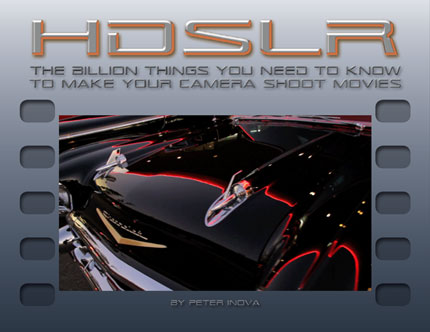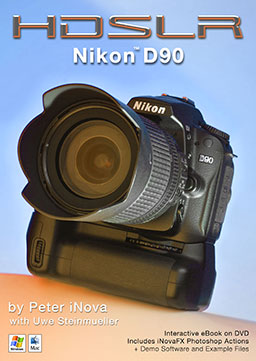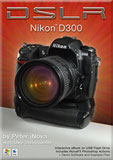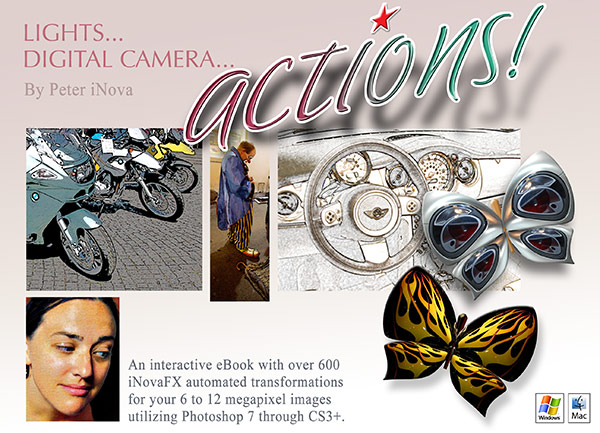
|
Anybody out there seen "Myth Busters?" Here's an update on the Prime "Urban Myth" coursing through the universe of digital photography. Myth Mangled: A Pick in a Pogue One of the chestnuts of digital photography is the Mega. We've talked about this until we are some mixture of red, green and blue in the face, but a recent article in the New York Times by David Pogue has put a new log on the fire. It wasn't about how many metaphors we could cram into a small space, but how many megapixels is really worth paying for. The premise is that the megapixel race is not what you think. And that would be true. Manufacturers found out that we consumers think Bigger = Better, so they dangle more megapixels under our noses to lure our credit cards out of our wallets. Shame on them. Shame on us. I've waged a similar war on misunderstanding in parallel. I don't consider an upward expansion of the MP to be worth lifting an eyebrow over until it passes the 3:5 rule. The one that says a 5MP camera is worth getting if you have reached the growth spurt stage from your 3MP camera. This also means a 10MP camera trumps a 6MP unit. In terms of linear pixels--the count that matters on the page--3MP cameras have a size factor of 100 while a 5MP camera has a size factor of 129. 5MP fields of pixels are 29% larger than 3MP mosaics. Once you reach enough pixels to create Very Large Prints, that all slides into the moot category. With a 10MP image you can print a 16 x 24 sheet at 161+ pixels per inch. This is nearly exactly the magic number I consider to be the threshold of High Quality Digitograph. It's about as fine as the dot screen in very high quality mechanical reproduction, but of course those are dots, not full-fledged pixels, which are much better looking at 160 per. I whisper other numbers in my ear for "Good Photo" and "Adequate Photo," but that's another story. Read his article then come back for the mildly stinging conclusion. Notice that Pogue did a Who-Can-Spot-The-Difference test by starting with a 13 MP image, using Photoshop to downsample the image to files to the 8MP and 5MP sizes that smaller MP cameras produce naturally, then he blew them all up to 16 x 24 inches and showed them to a bunch of viewers, literally on the streets of NYC.
One single image served to prove, up or down, whether the megapixel myth was busted or not. Now that's what I call research. The display images were processed from their original and scaled files through the software and hardware that produce Durst Lambda Type C prints. Interesting, that. This is a massive printing technology that describes itself as "Using a single-beam, three color (RGB) laser image system, the Lambda provides superior color saturation and fidelity, better image quality, more details and sharper type than other alternatives." That desk-side printer pictured here is the item in question. Not exactly your $300 ink-jet. Not even close to your $2500 wide body Epson, either. One thing is certain: Files don't simply get "printed" with the Durst Lambda, they get "improved" as noted in Durst's literature. Well, dang, they ought to for $400,000+! So what image-processing algorithms are involved? Shh. Trade Secret. But there are many over-the-counter remedies you might use in the privacy of you own PC to up-rez images to a larger print result. Does Genuine Fractals 4.1 ring a bell? Can you Google "S-Spline XL?" People complained to Pogue that downsampling isn't a fair test. The instant effect of downsampling is to pack the detail into fewer pixels. We've noted endlessly in our eBooks and on some of the pages around this site that cameras don't deliver their best shot on a per-pixel basis with the Large frame option every digital camera shoots with. Large frames are used to re-render Medium and Small frames. Usually the Medium frame is around 67-80% of the size of the Large, original capture frame, and downsampling to this size in the camera produces smaller, tighter, more pixel-perfect files. You can even blow these files up to the size of the Large frame, print them out and challenge viewers to tell the shots apart. Here's an example: The chunk here is a 100% crop from the middle of a 6MP image. Depending on the resolution of your computer screen this image could be a portion of a 30 inch print, as it is on my 101 dpi monitor, or a piece of a 32.25-inch wide shot when viewed on a 96 dpi monitor, and so on. But that's not the point. Roll your mouse over the shot and you see a second image. Both shot with the same camera and lens, but one file was captured at 66.7% of the pixel count of the other as a Medium frame. They're so close to being identical in detail that it probably comes as a bit of a surprise to realize the rollover image file eats literally 44.4% of the AREA of the top image, consuming less than 50% of the megabytes of storage. The smaller frame was enlarged in Photoshop to the capture file size to make this point. Even after being down-sampled in the camera, then up-sampled in Photoshop, it looks within a flea-hair of identical. So much for All You Have To Do Is Downsample. And therein lies the Mangle in the Myth of Pogue's first test. The jump from the Large original to the next size down represents just about zero difference, and the jump to the smallest file size retains so much opitimized detail that it fails utterly to represent a 5MP camera file. But being a responsive fellow, he tried it again. His second test was somewhat more inspired, but still lacked an essential detail. He had a photographer shoot a scene with a Full Frame Canon EOS 1Ds Mark II, a 16.7MP camera with a zoom lens. A series of shots, zooming out to exactly produce 10MP and 7MP cropped images were created from a studio subject. The principle is this: Zoom wider, but crop that 10MP or 7MP chunk of pixels out of the much larger pixel-count image. It should work, eh? Well it seems intuitive, but remember, often the most misleading--or expensive--words in any language continue to be "All You Have To Do Is..." Again the Durst Lambda prints. Again a viewing. Now ONLY 3 people out of 50 could say which was which. Hmm. 6% of casual viewers could spot the difference between 7/10/16.7MP originals shot with a zoom lens at different focal lengths? What's wrong or right with this ...er... picture? Pogue uses this as fodder to justify how the public is being duped into reactionary purchase of more and more megapixels in the 5MP to 7MP zone, and while most folks may believe in megapixels more than they should, the test has some World Class Flaws: 1. Everything required to bust this Megapixel Myth was wrapped up in one single photographic situation. 2. Zoom lens? Does this zoom perform identically at all zoom settings? Does the inner 47% of that zoom lens amount to a fair test when chopping out the 7MP variation? The general rule from Heisenberg to Ansel Adams is, "The closer you look, the lower the detail." 3. Depth of Field. As a lens zooms wider to accommodate a smaller patch of image chip, the DOF gets deeper. Yes, even when you zoom n' crop. (Compare DOF between a 4x5 plate shot through a lens delivering a 40 degree field of view and a Canon Rebel XT with a 50mm lens, both cameras at f/8, and you will see the effect instantly.) 4. The smallest file in the test series is 7MP. At typical 7MP file sizes, that implies a picture just under 2200 x 3300 pixels. A 24-inch print--even from an ink-jet printer that wide--would deliver 137+ camera pixels into every running inch of print. This is a high plateau to start with when trying to make the point that low MP shots are just as good as higher MP images--which is the subtext of the Pogue original rant. 135+ ppi creates what I see as "Good Photos" on my personal ppi scale. Why was no further test done at a zoom setting that allowed a 5MP and a 3MP chunk of the camera's pixel array? After all, the point to the article wasn't just to say,
Well, if that 5MP camera is just as impossible to detect as the 7MP one, why didn't Mr. Pogue use it in his test? 5. Fifty people? Three hits? The 6% result doesn't count people who got 1 out of 3. (Nor did the earlier test tally, BTW.) There's no telling from the data provided, but statistically, the group could have been 80% accurate on the lowest resolution image, but missed the 10 and 16.7--both of which would have delivered very high dots per inch counts onto the paper. Not hard at all on a 16 x 20 print that's been through a printer that costs as much as a stable of Ferraris. In the data presented in the article the smoke and mirror is in counting only those hits that identified all three in order and assigning it significance. 6. Content. If an image designed to push the point of pixels being the root of all evil is tainted by anything not associated with pixel-ness, the test is flawed. Are we testing the appeal of the image here or are we testing the relative effect of more or less pixels? How about a picture of a tangle of branches that has pretty much a neutral content and which would force the viewer to stay on track? Now the DETAIL of the image would be what people focused on, not any other quality present in the image. From the illustration in the original article, it seems that second test has a live model within it. Microscopic queues of emotion may have crept into the pose or expression, tainting one's ability to judge on pixel-presence phenomena alone. After all that WAS the original premise: that the pixel count selling hype was some sort of fraud.
No impressionable group of rank amateurs is queueing up to buy the 16.7MP EOS 1Ds Mark II. Enthusiasts with grand ideas are buying the 10MP cameras and the consumer that Mr. Pogue seems trying to inform is working with 6MP cameras or thereabouts, statistically, most of the time. It's no secret, if you have read any of my eBooks--going all the way back to the original in 2000--that almost nobody looks at a picture of this 130+ ppi density and sees anything other than a nice rich picture. By the time the camera pixels flow onto the page at 160 per inch, the individual pixels can't be resolved by the fresh eyes of a 7-year old. At 180 ppi, you've transcended National Geographic's rotogravure dot screen, and at around 200 camera pixels per inch of paper you've exceeded the ability for a glossy stock to appear "sharper." That's been a given since the invention of human vision or ink-jet printers, whichever came first. A perceptual rule of two thumbs up. But the disturbing thing is that 6% of a sample viewership of 50 pairs of casual passersby saw improvements in the 10MP and 16.7MP shots, as well and could articulate it as a call. The sample of judges were NOT reported to be the enthusiast photographers who buy the gear in question. What did the 50 perceive? Megapixels, or changes in Zoom lens performance at different stages, or even subtle DOF clues? Pogue's not saying. Nor did he say that the photographer who conducted the zoom test and he could not tell the shots apart easily. But he will say "It's a big fat lie," using language more journalistically jaundiced than accurate. I mean, he isn't saying the 10MP camera doesn't have the pixel population that's sold to you. So how big and how fat is the claim, and how is it a lie, exactly? Who supplied the conclusion "the better the picture?" The eye of the beholder, or the ad copy? How is a 10MP image NOT AT ALL better than an 8MP image? The Devil's in the detail. 10MP cameras are sold as having 25% more pixels than 8MP cameras. But the linear addition to the picture is far smaller. 10MP is an AREA measure. The linear measure is where more and more detail build up. Here's that comparative frame image you need right now:
See. 8MP, blue, and 10MP, pink, are very near in size. But the jump from 6MP to 10MP is worth the leap. Here's where I agree with the premise of Pogue's rant:
And add a few of my own:
If you were to toss your 8MP camera out the door for a --hot damn-- 10MP new camera, you would be an idiot. Three hundred sixty eight more pixels wider! B'waaa ha ha ha. That's 10%. You sold off your old camera, taking the Used Goods hit to your wallet for 10% more pixels? Each new pixel of width has just cost you two bucks. What a maroon. And once you rise into the 6+ megapixel stratosphere, the oxygen has gone out of the Bigger = Better argument unless you're doing pro work--or dream of achieving higher level results.
Canon up-rezzed their 8MP Rebel XT for the 10MP Rebel XTi with exactly that intention; to get the XT owner to re-buy the camera with its 20% more pixels, thus achieving photographic nirvana, right? Well, of course, the marketing department was the champion for the up-rez, and few XT owners were the real target consumer, but a techno-tweak (the XTi has other highly-desirable features) to the model plus a bump in MP to compete numerically with Nikon are all laudable goals. Today's Rebel buyer gets a tad more camera than yesteryear's for the same price. They call that progress. Speaking of yesteryear. A long time ago (2002-ish) when 3MP was the hot tip item, I stated in one of these pages that the target was about 2004 with a 6MP image that would lay to rest the comparisons to 35mm. Digicams larger than 6MP can likely outperform your father's Kodachrome and color negative shots in many ways, not all of them being detail-only. Resolution to Resolution Where the fairer test might come from, to see if people could tell the difference between 4, 5, 6 and 10MP cameras, is here: 1. Shoot a group of at least 30 DIFFERENT images with each file size. Expand the sample. Make it a gallery of shots. Where possible, use same-brand/same sensor-format bodies with the same optics and subjects. 2. Blow them all up to 20 x 30 inches with EZ-Prints' $18 Poster option and hang those. (Consumer affordability is important.) 3. Now run 200+ people past them and tell them that they're trying to see the 4, 5, 6 and 10 MP camera's work. Better yet, use photographers as judges from enthusiast grade or higher. Make sure they understand that differences in color and tonality are not what they're trying to gauge. 4. Apply true statistical analysis methods to sorting out the results (deviations caused by misidentifying a 4MP as a 10MP count against validity harder than misidentifying a 4MP as a 5MP, and so on) and 5. tally me bananas. With a test like this, you might actually see MCT* Scale results that shows --not IF, but actually how much-- megapixels count. You might find that people thing 10MP cameras are really only 10% better than 8MP cameras, for instance, which would be exactly true. After all. The world of digital photography does not revolve around two shots shown to passersby informally. Every day billions of samples enforce or reenforce the notion that "More Megapixels Make More Moments Memorable." The point to having more megapixels is not in using every pixel at the limit of perception for every print. Nobody has that much wall space. Or ink-money. Where the truth lies is slightly to the right of his rant. More megapixels is a diminishing returns game, to be sure, and consumers are indeed being smacked in the head with Bigger = Better in every generation of digital top-of-the-line enthusiast camera models, but it is only 72.3% hype. The other 27.7% is really useful when push comes to shove, and isn't that what you buy a camera for? You don't get it for its average performance, you buy it to achieve the most you anticipate needing. At the outer edge of how far you will take it. Even though you normally use it for average resolution results. The extreme use should not be precluded in your purchase decision. If you EVER are going to make a Big Honking Print, you can't do it with your 6MP cam. But if you are traveling with a 10MP camera, you have a better chance. 29% better. The Myth wasn't broken in David's article. Just mangled. As in "You have a point there, but it's bent." *MCT--the Mom Can Tell scale of discerning whether anything is really important or not. Without knowing it David Pogue was trying --hard-- to use a variation on the MCT to show how very OBVIOUS it is that consumer file formats don't bring you the astounding differences the ads seem to claim as the megapixels rise. What he ended up showing through a printer that costs as much as a farm is that 7/10/16MP shots can't be quickly discerned by more than 6% of a casual group. How about repeating that test and getting 5MP and 4MP and 3MP results off that Canon EOS, then asking DSLR owners to make the call? And use a printing technology that is within reach, fer gosh sake.
|
|
© 2007 Peter iNova. All rights reserved.
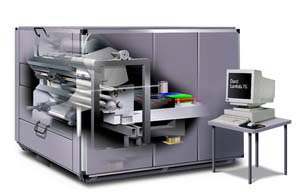 Out of his first group of viewers only one person could spot the files in correct pixel-density order.
Out of his first group of viewers only one person could spot the files in correct pixel-density order.

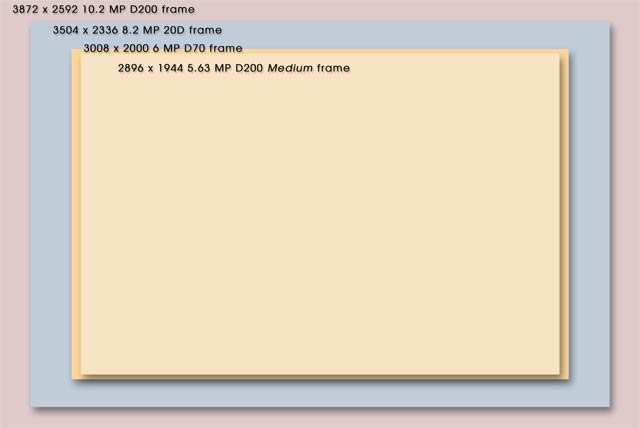
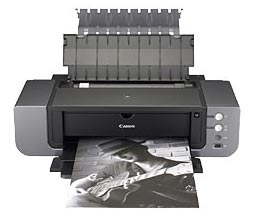 Similarly, the 8MP images are NOT bigger and better than 7MP images by a noticeable degree, and most 6MP DSLRs are fine, thank you very much, for enlargements up to and including the largest printer enthusiast photographers are likely to generate at 19 x 13 inches with the crop of affordable SuperTabloid printers.
Similarly, the 8MP images are NOT bigger and better than 7MP images by a noticeable degree, and most 6MP DSLRs are fine, thank you very much, for enlargements up to and including the largest printer enthusiast photographers are likely to generate at 19 x 13 inches with the crop of affordable SuperTabloid printers.